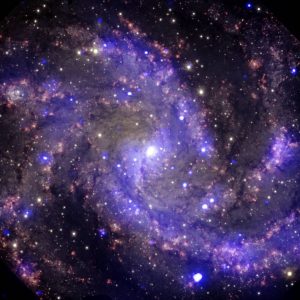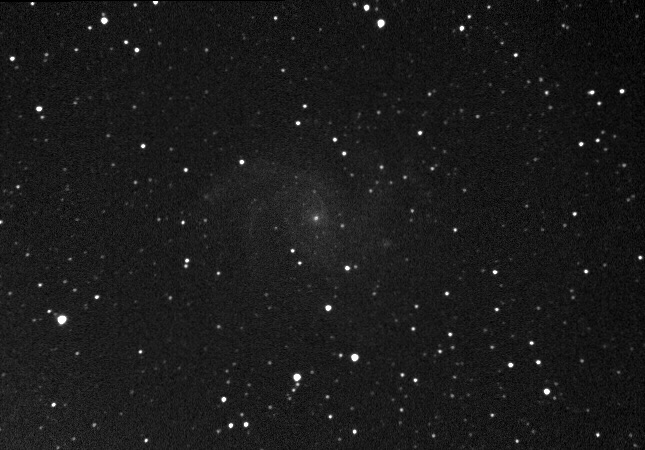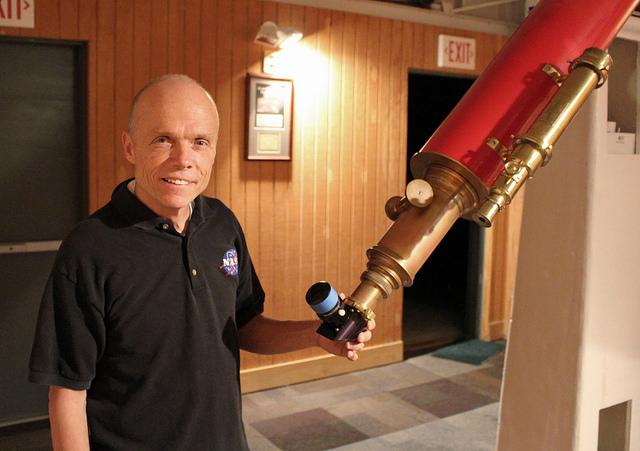When a star dies, it goes out with a bang.
Patrick Wiggins — public outreach educator for the University of Utah’s Department of Physics & Astronomy, and NASA solar system ambassador to Utah — would know. He’s discovered several, with the most recent being just last month.

Wiggins has been taking photos of galaxies since 2011, but his most recent shots revealed something unusual in the night sky.
“Each time I take a picture, I compare that night’s picture to one taken a few years before. Usually, I don’t see anything different but Sunday morning there was something new,” Wiggins said. He had just discovered a supernova.
Using a telescope at home, Wiggins had been looking at Fireworks Galaxy, a nebula 22 million light years from earth. Then he saw what appeared to be a bright spot, which was later confirmed by experts as a supernova now called SN 2017eaw.
According to NASA, a supernova is “the largest explosion that takes place in space.” It happens in two ways. In solar systems with two stars, one steals matter from the other. At some point, it becomes so dense that the overwhelming force of gravity on it causes it to collapse and explode. This is called a Type I supernova. Alternatively, in a Type II supernova, the category the SN 2017eas falls into, a single massive star runs out of nuclear fuel and its mass collects at the star’s core. Its own gravitational forces cause it to collapse and explode.

This explosion looks like a burst of light from earth, and can often be observed not only with the large telescopes often owned by academic institutions like the U but also with small telescopes that anyone can own. Some supernovae are even visible to the naked eye.
Supernovae are important to scientists because some can help them study the expansion of the universe. They’re also important for their role in the distribution of elements across space. As NASA explains, “When the star explodes, it shoots elements and debris into space. Many of the elements we find here on Earth are made in the core of stars. These elements travel on to form new stars, planets and everything else in the universe.”
Wiggins has discovered things in the night sky before: other supernovae, an asteroid now called Univofutah, and “a small handful of minor planets.”
“It is very common for things like that to be found by professionals with large telescopes,” Wiggins said. “Much less common for people like me who use small telescopes and just do it for the love of contributing to the body of science knowledge.”
For Wiggins, “it can get a bit boring doing the same thing every night for years on end,” but those occasional discoveries make it worthwhile.
Students and others interested in trying to find astronomical events like supernovae “have something of a leg up on everyone as they have access to the equipment needed right on campus,” he added. There is an observatory on campus which is open to the public for free star parties every clear Wednesday night. There, they can observe galaxies, planets and stars. The staff there can also help with learning how to use telescopes and even with buying telescopes for use at home like the one Wiggins used to discover SN 2017eaw.
The work Wiggins does at home for science has earned him awards, including the Distinguished Public Service Medal, awarded to him by NASA. Recipients of the honor are those who “demonstrate a level of excellence that has made a profound or indelible impact to NASA mission success” and whose contribution to science “is so extraordinary that other forms of recognition by NASA would be inadequate.”
It is NASA’s highest award given to civilians.
@EliseAbril



